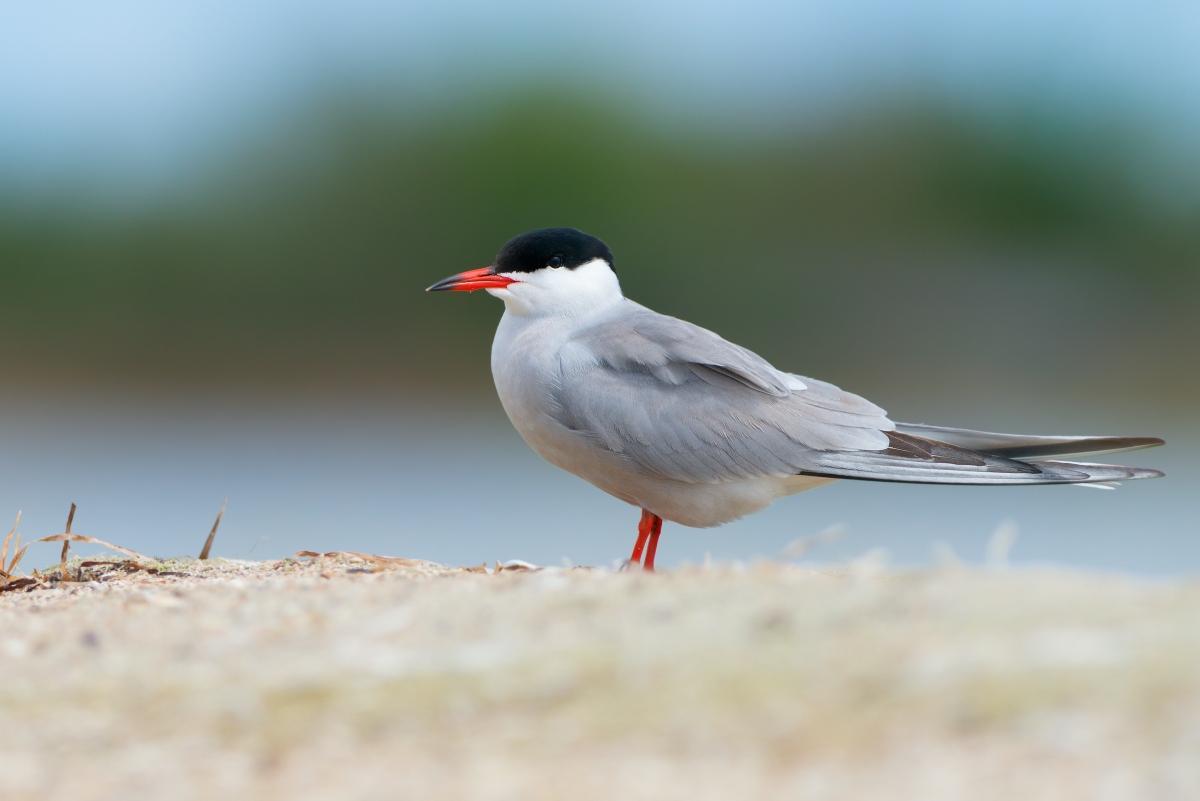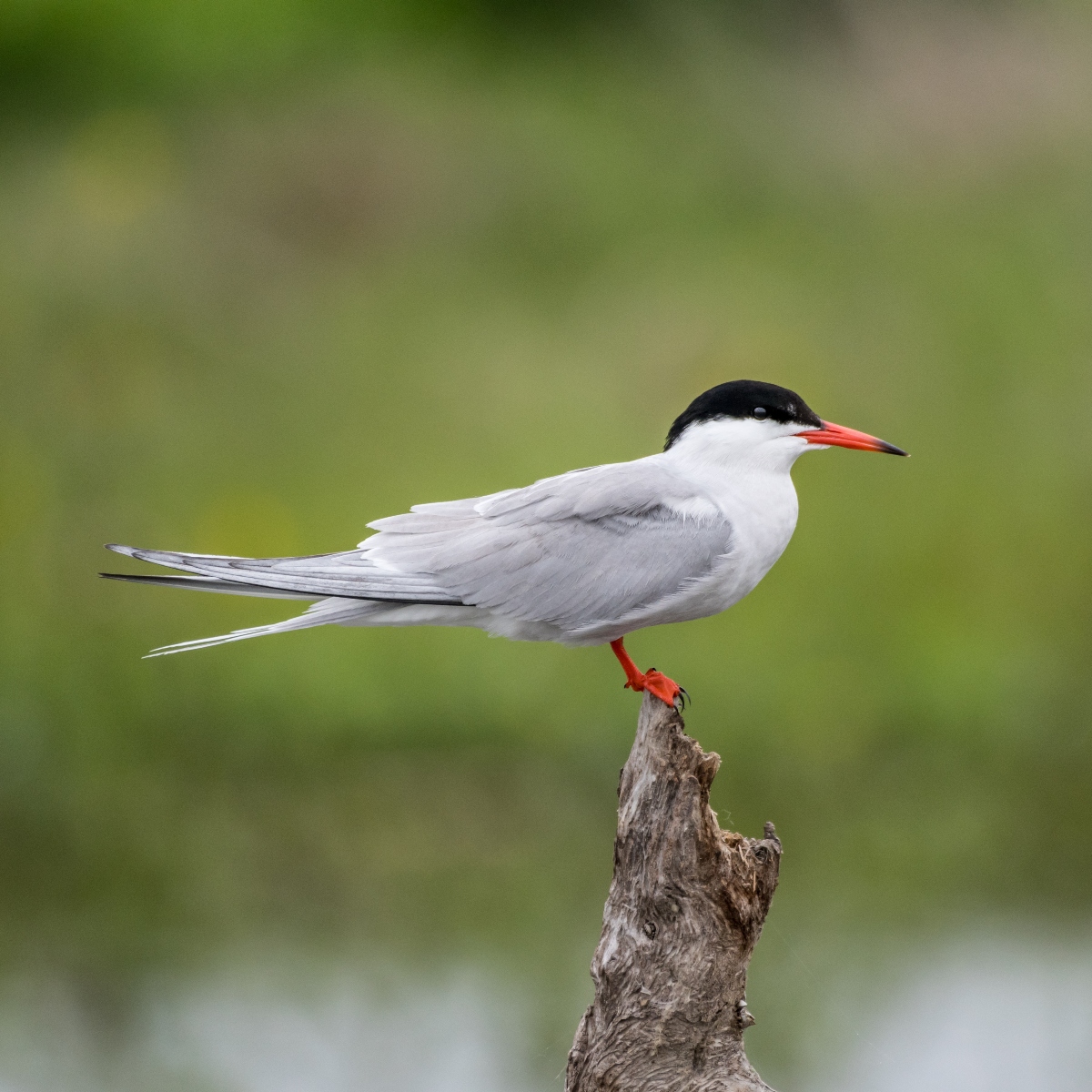A spectacle in flight, the Common Tern (Sterna hirundo) glides gracefully above coastal and inland waters, capturing the essence of delicate, aerial finesse. With a predominantly grey and white plumage, these elegant birds showcase a distinguishing black cap atop their heads, a sharply pointed bill, and elongated, pointed wings, characteristics that enrich their sleek aesthetic.

Common Terns are renowned for their impressive migratory journeys, some traveling from their northern breeding grounds in regions like Europe and North America, to the warmer climates of the southern hemisphere. These birds can traverse distances that span thousands of miles, embodying a true spirit of wanderlust and endurance.
In search of sustenance, Common Terns exhibit a captivating hunting technique known as “hovering.” With a poised suspension above the water, they scrutinize the depths before plunging into the waters to seize their prey, primarily consisting of fish and invertebrates.

Breeding season brings forth a delightful observation of communal living. Common Terns are often colonial nesters, establishing their breeding territories on sandy or shingly coasts and islands. Their nests, simple scrapes in the ground, cradle clutches of speckled eggs that blend seamlessly with the surrounding terrain, a natural subterfuge against potential predators.
Parental duties are shared diligently between the male and female. From incubating the eggs to feeding the chicks, both parents engage in a cooperative effort to nurture their offspring. The young terns, after a period of about three to four weeks, are capable of flight, unfolding their wings to join their parents in the expansive sky.

Beyond their graceful flights and admirable parental cooperation, Common Terns showcase a compelling resilience. They navigate vast migratory routes, face the challenges of fluctuating food availability, and defend their nests against intruders, often punching above their weight in confrontations with potential predators.
However, the species is not exempt from challenges. Their habitats, especially breeding grounds, are susceptible to human disturbance and climate change impacts, such as rising sea levels and storm surges that can engulf nesting sites.
The Common Tern, with its delicate features, awe-inspiring migrations, and spirited life history, thus spins a tale of wander, survival, and beauty, skimming the water surfaces of our world with wings outstretched, embodying a subtle, yet profound elegance amidst the boundless horizons.